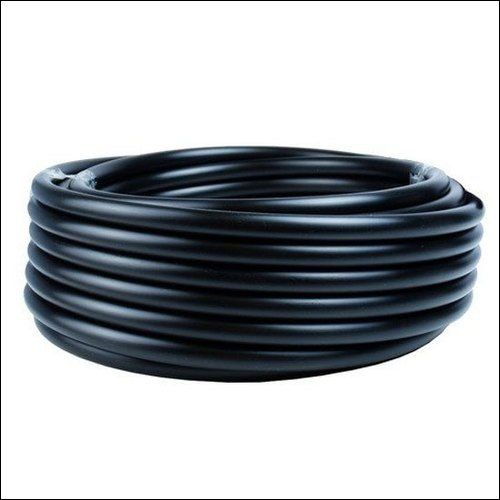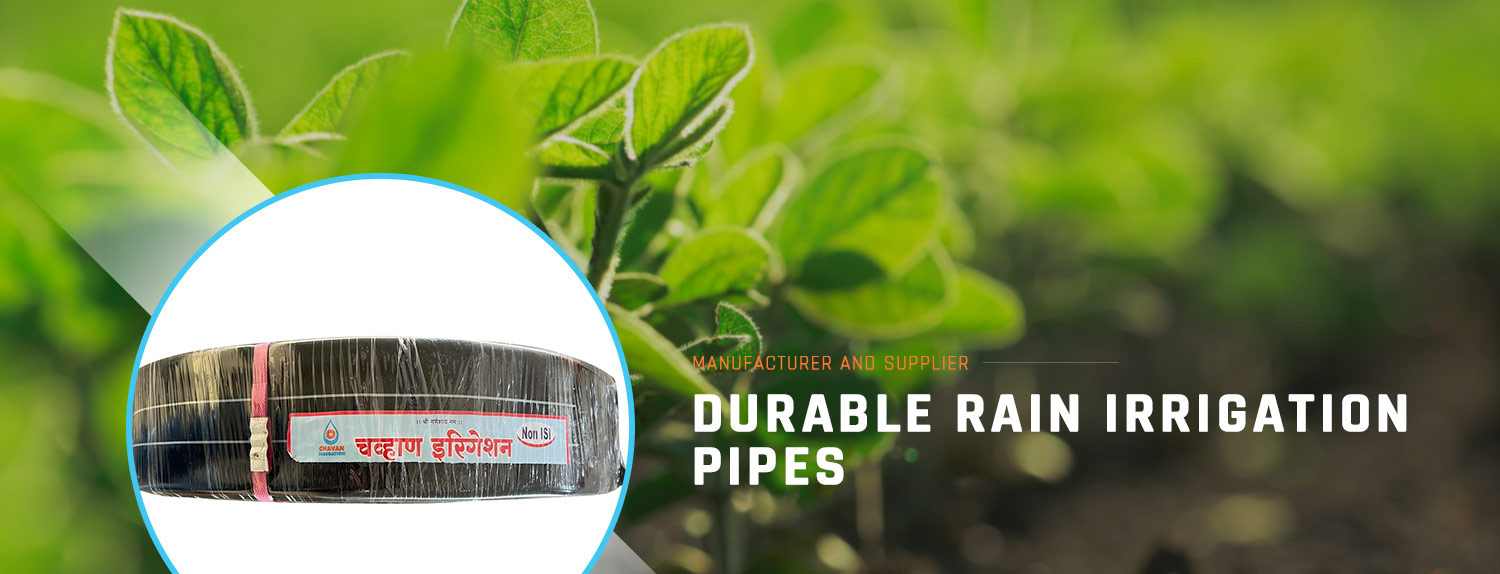Call Us : 08045814301


16mm Inline Drip Irrigation Pipe
950 INR/Bundle
Product Details:
- Product Type Drip Irrigation Pipe
- Material Rubber
- Diameter 16 Millimeter (mm)
- Usage Drip Irrigation
- Application Industrial
- Click to view more
X
16mm Inline Drip Irrigation Pipe Price and Quantity
- 1 Bundle
- 950 INR/Bundle
16mm Inline Drip Irrigation Pipe Specifications
- Drip Irrigation
- 16 Millimeter (mm)
- Industrial
- Rubber
- Drip Irrigation Pipe
16mm Inline Drip Irrigation Pipe Trade Information
- 7 Days
Product Description
Inline drip irrigation pipe is a type of irrigation system commonly used in agriculture, landscaping, and gardening to efficiently deliver water directly to the root zones of plants. It consists of a flexible plastic pipe with built-in emitters or drippers spaced at regular intervals. These emitters release water slowly and evenly, allowing for precise and controlled irrigation.
Here's how inline drip irrigation works:
1. Pipe Selection: The pipe used for inline drip irrigation is usually made of durable and UV-resistant materials like polyethylene. It comes in various diameters, typically ranging from half inch to 1 inch, depending on the water flow requirements and the size of the area to be irrigated.
2. Emitter Placement: Emitters are integrated directly into the pipe during the manufacturing process. They can be spaced at specific intervals, such as 6, 12, or 18 inches, depending on the plant spacing and water needs. The emitters come in different flow rates, allowing you to tailor the irrigation to the specific requirements of each plant.
3. Water Distribution: The inline drip pipe is laid out along the planting rows or around the base of individual plants. The pipe can be buried under mulch or soil to help minimize water evaporation and reduce weed growth. As water flows through the emitters, it drips out in small, consistent quantities directly onto the soil surface or into a shallow trench, effectively delivering water to the plant roots.
4. Pressure Regulation: Inline drip systems often include pressure-regulating devices to ensure a consistent flow of water to each emitter, even if there are variations in the water supply pressure.
5. Filtration: A filter is usually installed at the beginning of the drip system to prevent clogging of the emitters by debris or particles present in the water source.
Benefits of Inline Drip Irrigation:
1. Water Efficiency: Inline drip irrigation is highly efficient because it delivers water directly to the root zone, minimizing water wastage due to evaporation or runoff.
2. Reduced Weed Growth: Since water is applied directly to the soil near the plants, there is less moisture on the surface, which can help reduce weed growth.
3. Reduced Disease Spread: Water is not sprayed over the foliage, reducing the likelihood of spreading waterborne diseases among plants.
4. Customized Irrigation: The ability to adjust emitter spacing, flow rates, and placement allows for precise customization of irrigation based on plant types and water requirements.
5. Erosion Control: Drip irrigation minimizes soil erosion by delivering water gently to the soil surface.
6. Energy Savings: Drip systems use lower water pressure than traditional overhead sprinklers, resulting in energy savings, especially in areas with electric pumps.
FAQ:
Q. What is an inline drip irrigation pipe?
Ans: An inline drip irrigation pipe is a flexible tube with built-in emitters or drippers that deliver water directly to the root zones of plants. It is used to efficiently irrigate plants while minimizing water wastage.
Q. How does inline drip irrigation work?
Ans: Inline drip irrigation works by releasing water slowly and evenly from emitters spaced along the pipe. The water drips directly onto the soil surface or into a shallow trench, providing moisture to the plant roots where it's needed most.
Q. What are the benefits of using inline drip irrigation pipes?
Ans: Benefits include water efficiency, reduced weed growth, targeted irrigation, reduced disease spread, erosion control, and energy savings. It also allows for customized irrigation based on plant types and water requirements.
Q. Where can inline drip irrigation pipes be used?
Ans: Inline drip irrigation pipes are versatile and can be used in gardens, landscapes, agricultural fields, orchards, vineyards, and greenhouses.
Q. How are inline drip irrigation pipes installed?
Ans: Inline drip pipes are laid out along planting rows or around individual plants. They can be buried under mulch or soil to prevent water evaporation and reduce weed growth.
Q. Do I need a special water source for inline drip irrigation?
Ans: Inline drip irrigation can work with a variety of water sources, but it's important to have proper filtration and pressure regulation to prevent clogging and ensure consistent water delivery.
Q. Can inline drip irrigation pipes be used for trees and shrubs?
Ans: Yes, inline drip irrigation is suitable for trees and shrubs. You may need to adjust the emitter spacing and flow rates based on the size and water requirements of the plants.
Q. How long do inline drip irrigation pipes last?
Ans: The lifespan of inline drip pipes can vary based on the quality of the materials used, installation practices, and maintenance. High-quality pipes can last for several years.
Q. Are inline drip irrigation pipes easy to maintain?
Ans: Inline drip systems require regular maintenance to ensure proper functioning. This includes checking for clogs, replacing worn-out emitters, and performing system flushes.
Q. Can I install inline drip irrigation pipes myself?
Ans: DIY installation is possible, but proper design and installation are important for optimal performance. It's recommended to follow guidelines and, if needed, consult with irrigation professionals.
Q. Can inline drip irrigation pipes be automated?
Ans: Yes, inline drip irrigation systems can be automated using timers or controllers to schedule watering times and durations.
Q. What is the difference between inline drip irrigation and other irrigation methods?
Ans: Inline drip irrigation delivers water directly to the root zone, minimizing water wastage and reducing weed growth compared to overhead sprinklers. It also helps reduce disease spread by avoiding foliage wetting.
Q. Can I retrofit my existing irrigation system with inline drip pipes?
Ans: Yes, it's possible to retrofit an existing system with inline drip pipes, but it may require adjustments and modifications to the current setup.
Enter Buying Requirement Details







